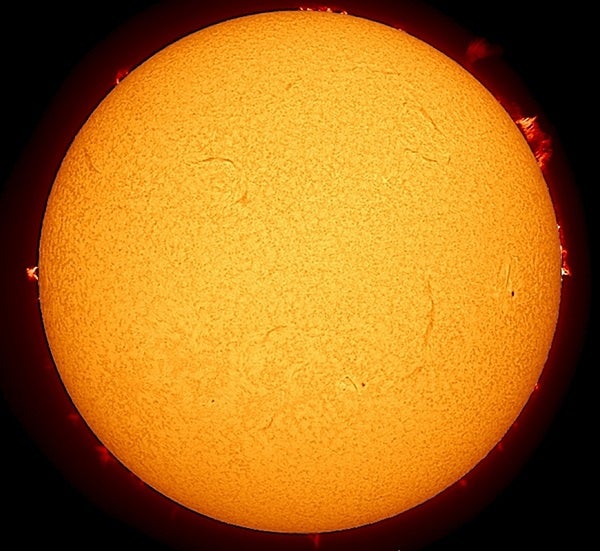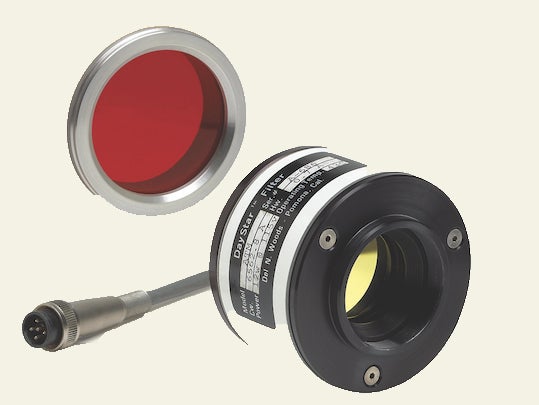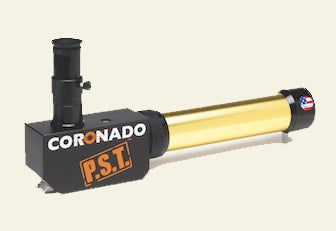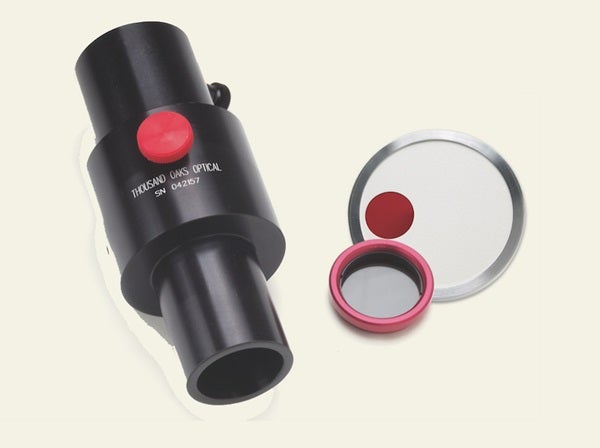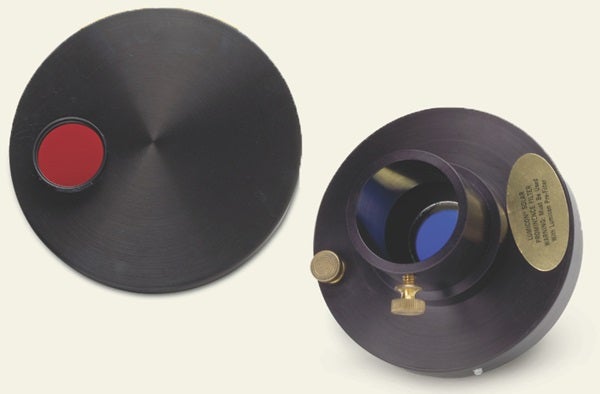This article originally appeared in the March 2007 issue of Astronomy.
Only one star, the Sun, lies close enough to resolve through amateur telescopes. Observing the Sun provides a superb daytime activity for novice astronomers, even those living in light-polluted cities. Most amateurs look at the Sun using white-light solar filters. More and more observers, however, are selecting Hydrogen-alpha (Hα) filters, which highlight the Sun’s chromosphere. With recent advances in technology and subsequent price drops, one of these filters may be right for you.
Four fine filters
I reviewed four Hα solar filters with a range of prices and bandpasses. I tested them in my home observatory in Portland, Oregon, on days when seeing was a 3 or 4, on a scale where 5 is excellent. Temperatures ranged from 32° F to 85° F (0° C to 30° C). I tested all the filters with a 14-inch Schmidt- Cassegrain telescope (SCT). I used a 77mm energy-rejection filter (ERF) at the front end of the telescope to reduce solar radiation before it strikes the main filter.
I also tested them with an 8-inch SCT using a 60mm ERF. Because it’s a standalone unit, I tested the Coronado Instruments Personal Solar Telescope (PST) mounted piggyback on my 8-inch SCT.
Daytime is the right time
The DayStar 0.06 nanometer (nm) ATM filter requires electricity for its built-in heater, which keeps the filter’s temperature in the desired range. A rheostat permits precise tuning by changing the filter’s temperature. Coupling the filter to the telescope requires a T-adapter.
The view through the DayStar was astounding. The chromospheric network showed fine rice-grain detail during moments of good seeing. Filaments appeared considerably darker than the disk, while flares were bright, like hot embers glowing through the ashes in a campfire. Crimson prominences had sharply defined edges against a pitch-black sky. Prominences were dimmest through the DayStar, an effect of the narrower bandpass.
The PST is an Hα-filtered refractor that cannot be used for any other kind of observing. It has a 40mm aperture and a 400mm focal length, yielding f/10. The PST’s etalon (interference filter) uses a central spacer to keep the filter’s wafers at the required distance from each other. This design keeps the telescope tuned to the Hα line throughout a wide temperature range, so no electric heater is required. In addition to the focusing knob, a knurled knob allows fine tuning of the etalon, but it rarely needs adjustment for routine use.
The PST has no mount and must be attached to a camera tripod or mounted piggyback on a larger telescope. It comes with a 20mm Kellner eyepiece and a built-in Sol Ranger solar finder. A pinhole, white-light solar image projects onto a translucent white disk when the Sun is centered in the PST.
The Sun’s image through the PST occupied only about half the field of view. The background sky was dark red-brown, but the PST still provided good contrast for prominences. I used a 12mm Plössl eyepiece for closer views of prominences. Filaments were dark and stood out nicely against the solar disk. The chromospheric network was visible as a mottled or eggshell texture on the disk, but it lacked rice-grain detail seen throughthe DayStar filter.
The PST’s convenience is a big plus. Anytime the Sun poked its face through breaks in Oregon’s cloudy skies, I could observe it through the PST in a matter of seconds. This was more practical than having to connect an ERF, adapters, and an Hα filter to a telescope recently used for nighttime observing.
Grand solar views
The Thousand Oaks filter requires a telescope at f/15 or slower once its ERF has been attached. (Divide your telescope’s focal length by the ERF’s aperture).
This Hα filter is a compact 4.75″ by 2″ tube with a plastic tuning screw that turns a tilting mechanism. The 0.09nm bandpass provided views similar to that through the PST, but the Thousand Oaks filter had some advantages. The larger aperture provided better resolution of the chromospheric network’s texture during moments of good seeing. Prominences were noticeably brighter than through the DayStar. Any dimming of the prominences seemed compensated by an equivalent darkening of the background sky, which was dark red-brown. As I increased the magnification, the prominences retained good detail.
Focus on prominences
Lumicon markets its 0.15nm bandpass system as a Solar Prominence Filter, but it can show filaments at times. It requires a telescope that will be at least f/20 with the ERF applied. One side of the disk-shaped filter has a tube that slides into a 2″ focuser. The other side has an adapter for 11⁄4″ eyepieces. The unit has a screw that turns a tilting mechanism to tune the filter to the Hα line.
I saw no hint of the chromospheric network through the Lumicon filter. However, I could see large filaments faintly against the solar disk. Prominences were best through this filter, appearing as bright red features projected against a reddish-brown background. Although contrast between prominences and the sky was less than through the other filters, prominences looked best through the Lumicon filter.
Pick a winner
The best Hα filter for you depends on your goals and budget. If you can afford spending a few thousand dollars and you are serious about Hα solar work, then your first choice should be the DayStar 0.06nm ATM filter. It shows the most surface detail and shows prominences well at the same time.
If you can afford about a thousand dollars and are serious about Hα work, the Thousand Oaks filter is a good choice. It provides bright views of prominences and full-disk views with lots of surface detail.
If your budget is smaller and you are mostly interested in observing solar prominences, then the Lumicon filter is perfect for you. It will show every prominence the expensive filters will.
If your budget is a few hundred dollars, then consider a PST. This dedicated Hα telescope is portable, practically foolproof, and works right out of the case. This scope will bring Hα observing within reach of many amateurs, and that makes it a valuable product.
If your first look through a telescope was memorable, get ready to experience that feeling the first time you see the Sun through one of these Hα filters. As you do, you’ll need to budget more time in your life for observing, because you’ll be busy both day and night.

